13 Best Herbal Tinctures For Dental Plaque
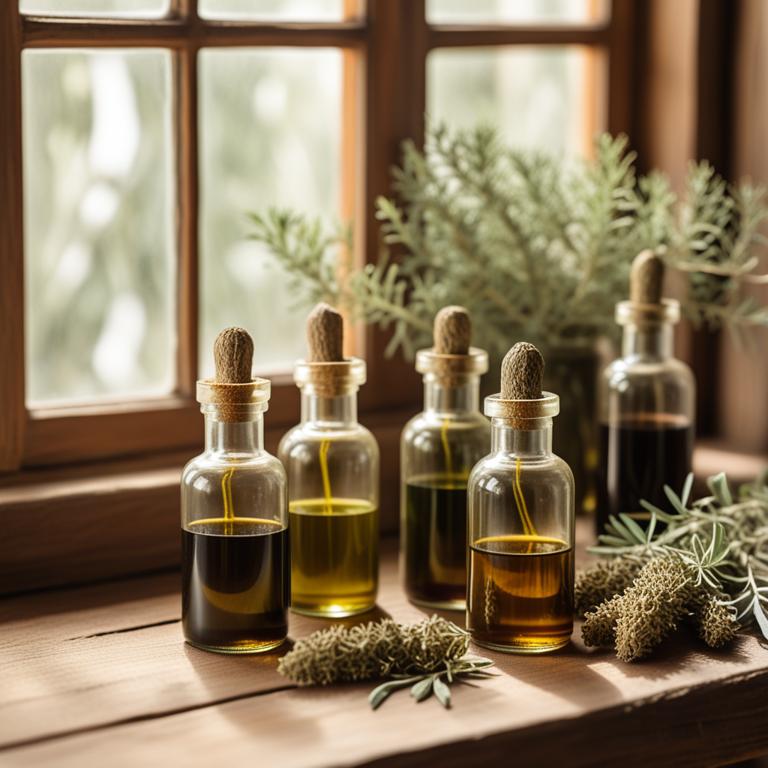
Herbal tinctures for dental plaque are concentrated plant extracts used to prevent and treat plaque buildup, a sticky film of bacteria that can lead to tooth decay and gum disease.
The benefits of using herbal tinctures to treat dental plaque include their natural antibacterial properties, ease of use, and minimal side effects compared to traditional medications.
Examples of herbal tinctures that can be used to treat dental plaque include peppermint tincture, which helps to freshen breath and reduce inflammation, while clove tincture's antibacterial properties help to kill bacteria that cause plaque.
Additionally, other herbal tinctures such as eucalyptus, tea tree, and myrrh tinctures can be used to treat dental plaque due to their antimicrobial properties, which help to prevent the growth of bacteria that contribute to plaque buildup.
According to "Journal of International Society of Preventive & Community Dentistry", tinctures for dental plaque can be made from medicinal plants with antibacterial properties, such as those found in Glycyrrhiza glabra, Ficus religiosa, and Plantago major, which effectively inhibit primary plaque colonizers and periodontal pathogens.
Below there's a list of the 13 best herbal tinctures for dental plaque.
- 1. Echinacea purpurea tinctures
- 2. Commiphora molmol tinctures
- 3. Curcuma longa tinctures
- 4. Syzygium aromaticum tinctures
- 5. Cinnamomum zeylanicum tinctures
- 6. Azadirachta indica tinctures
- 7. Salvia officinalis tinctures
- 8. Eucalyptus globulus tinctures
- 9. Melaleuca alternifolia tinctures
- 10. Origanum vulgare tinctures
- 11. Rosmarinus officinalis tinctures
- 12. Zingiber officinale tinctures
- 13. Aloe barbadensis tinctures
Also you may be interested in...
TODAY'S FREE BOUNDLE
Herb Drying Checklist + Herbal Tea Shopping List + Medicinal Herbs Flashcards
Enter you best email address below to receive this bundle (3 product valued $19.95) for FREE + exclusive access to The Aphotecary Letter.
$19.95 -> $0.00
1. Echinacea purpurea tinctures

Echinacea purpurea tinctures have been traditionally used to help treat dental plaque, an accumulation of bacteria and food particles on the teeth, by reducing inflammation and promoting a healthy oral environment.
The anti-inflammatory and antimicrobial properties of this herbal preparation help to combat the bacteria that cause dental plaque, while also soothing the gums and reducing redness.
The bioactive constituents of Echinacea purpurea, including alkylamides and phenolic acids, have been shown to exhibit potent antimicrobial and anti-inflammatory effects that aid in the treatment of dental plaque.
By using Echinacea purpurea tinctures, individuals may experience reduced plaque buildup, improved gum health, and a lower risk of oral infections, making it a beneficial herbal remedy for maintaining good oral hygiene.
2. Commiphora molmol tinctures
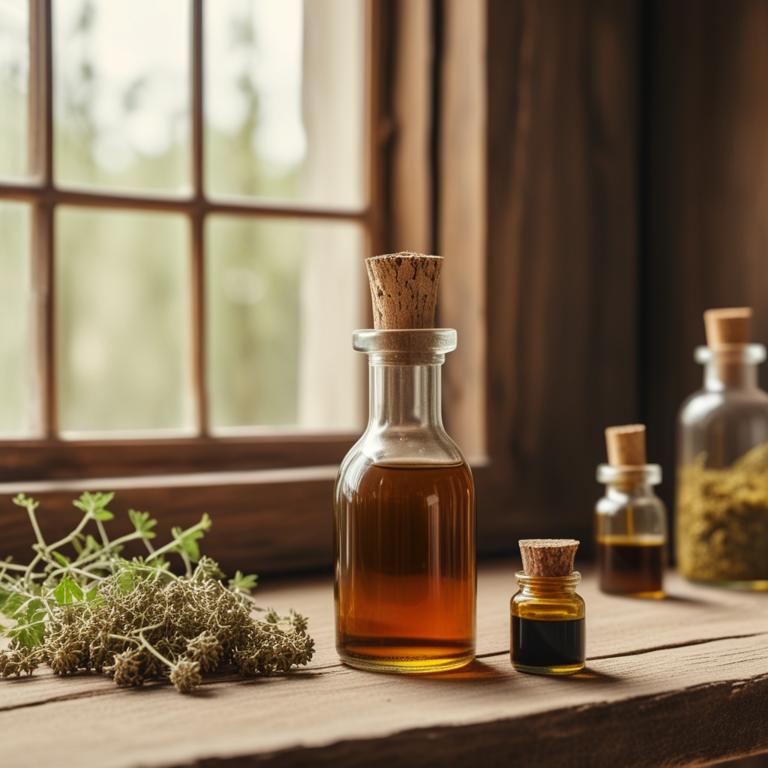
Commiphora molmol tinctures have been traditionally used to treat dental plaque, a condition characterized by the accumulation of bacteria and plaque on the teeth.
The bioactive constituents of Commiphora molmol, such as terpenoids and sesquiterpenes, exhibit antibacterial and anti-inflammatory properties, which help to reduce the formation of dental plaque and prevent its accumulation on the teeth.
By inhibiting the growth of bacteria and reducing inflammation, Commiphora molmol tinctures help to treat dental plaque by preventing the formation of tartar and promoting healthy gum tissue.
The benefits of using Commiphora molmol tinctures to treat dental plaque include reduced risk of tooth decay, gum disease, and bad breath, making it a natural and effective remedy for maintaining good oral health.
3. Curcuma longa tinctures

Curcuma longa tinctures have been traditionally used to treat dental plaque, a bacterial buildup on teeth that can lead to gum disease and other oral health issues.
The anti-inflammatory and antimicrobial properties of Curcuma longa tinctures help to reduce inflammation and kill bacteria that contribute to dental plaque.
The bioactive constituents of Curcuma longa tinctures, including curcumin, demethoxycurcumin, and bisdemethoxycurcumin, have been shown to inhibit the growth of bacteria that cause dental plaque and promote the healing of gums.
By using Curcuma longa tinctures, individuals can benefit from reduced inflammation, improved oral health, and a lower risk of gum disease and other complications associated with dental plaque.
Related Study
According to "Antioxidants (Basel, Switzerland)", Curcuma longa tinctures for dental plaque may help inhibit the growth of oral pathogens and reduce the formation of dental plaque due to the presence of antioxidant secondary metabolites.
4. Syzygium aromaticum tinctures
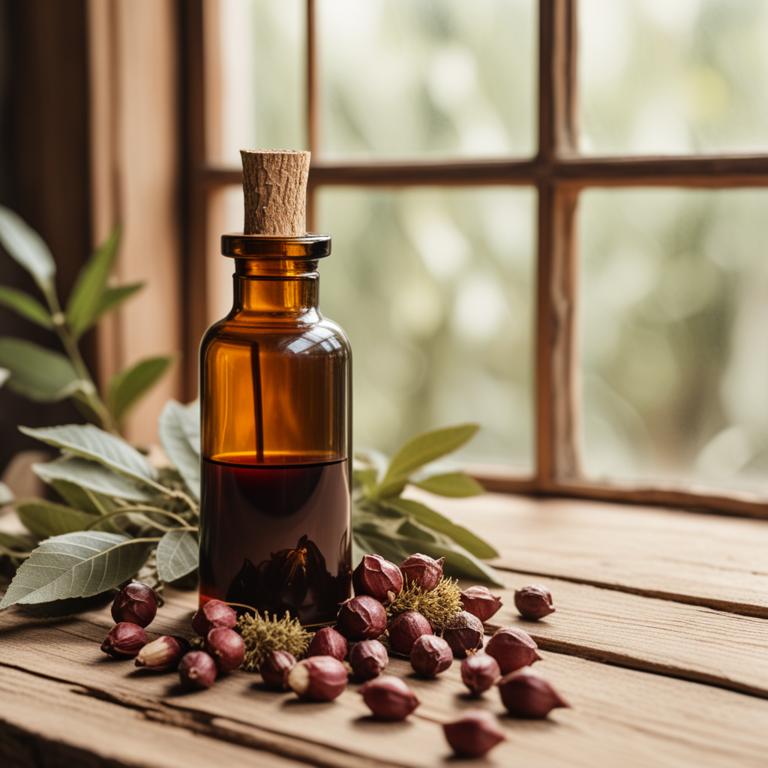
Syzygium aromaticum tinctures, derived from the bark of the clove tree, have been traditionally used to treat dental plaque, a bacterial biofilm that causes gum inflammation and tooth decay.
The anti-inflammatory and antimicrobial properties of this herbal preparation help to reduce inflammation, prevent bacterial growth, and combat the underlying causes of dental plaque.
The bioactive constituents of Syzygium aromaticum tinctures, including eugenol and beta-caryophyllene, have been shown to exhibit strong antibacterial and antifungal activities, making them effective against the oral bacteria that contribute to dental plaque.
Regular use of Syzygium aromaticum tinctures can help to prevent dental plaque buildup, reduce gum inflammation, and promote overall oral health, making it a valuable natural remedy for maintaining healthy teeth and gums.
Related Study
According to "3 Biotech", Syzygium aromaticum tinctures for dental plaque show potent inhibitory activity against both Streptococcus mutans and Lactobacillus acidophilus, two pathogens prominent in dental caries.
5. Cinnamomum zeylanicum tinctures
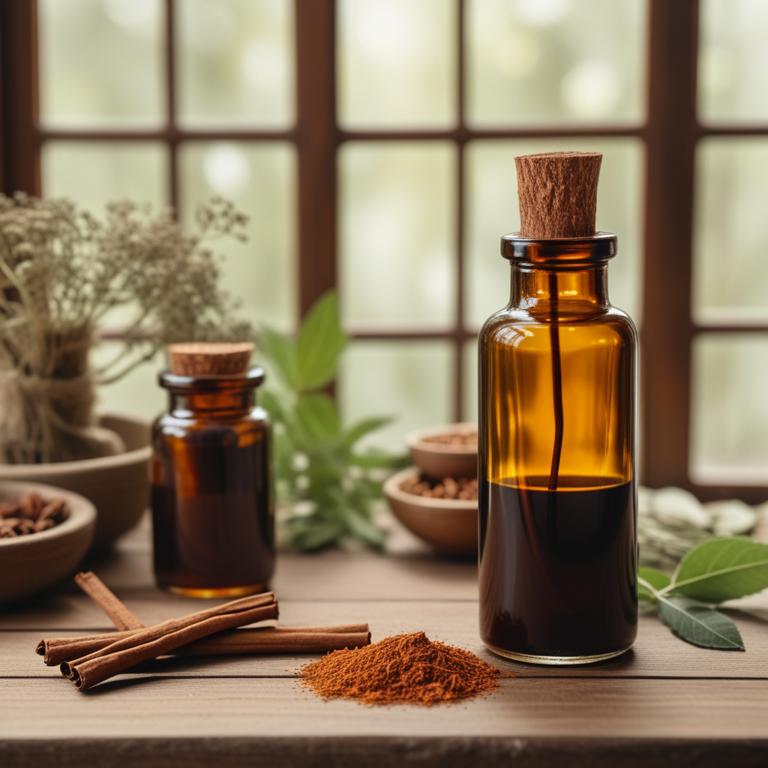
Cinnamomum zeylanicum tinctures, derived from the bark of the Ceylon cinnamon tree, have been traditionally used to treat dental plaque due to its antimicrobial and anti-inflammatory properties.
The bioactive constituents, including cinnamaldehyde and eugenol, exhibit potent antibacterial activity against the bacteria that cause dental plaque, thereby preventing the formation of tartar and reducing inflammation in the gums.
The use of Cinnamomum zeylanicum tinctures helps to treat dental plaque by inhibiting the growth of bacteria and promoting a healthy oral microbiome, ultimately leading to improved oral health and reduced risk of gum disease.
The benefits of using Cinnamomum zeylanicum tinctures to treat dental plaque include reduced inflammation, improved breath, and a decrease in the risk of oral infections.
Related Study
According to "Antibiotics (Basel, Switzerland)", Cinnamomum zeylanicum tinctures have shown potential in reducing dental plaque by inhibiting the biofilm formed by Candida spp. in the oral cavity.
6. Azadirachta indica tinctures
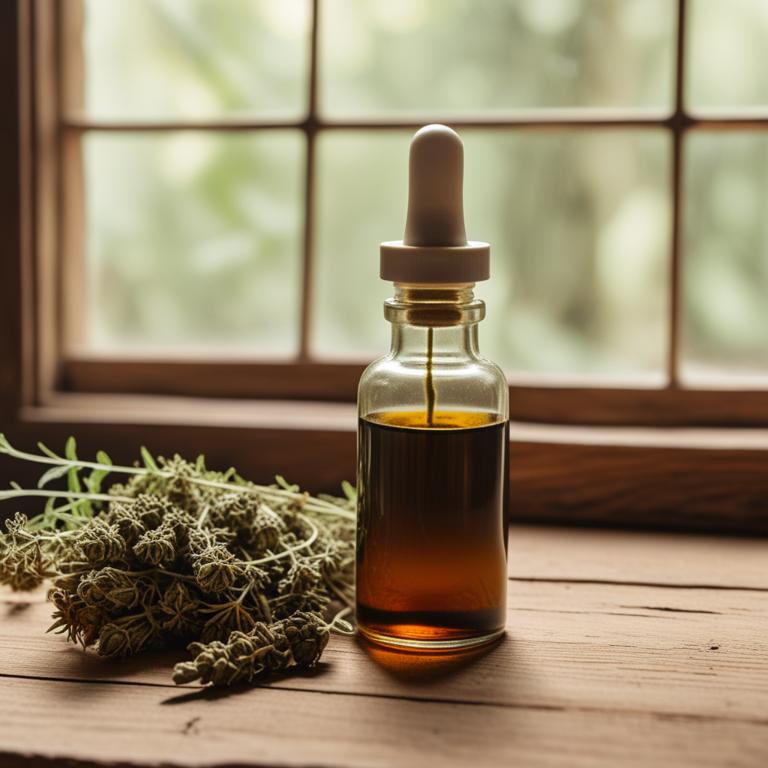
Azadirachta indica tinctures have been traditionally used to treat dental plaque, a condition characterized by the accumulation of bacteria and food particles on the teeth.
The antiseptic and antimicrobial properties of this herbal preparation help to treat dental plaque by inhibiting the growth of bacteria and reducing inflammation in the gums.
The bioactive constituents of Azadirachta indica tinctures, including limonoids and terpenoids, exhibit strong antibacterial activity, which helps to combat the causative agents of dental plaque.
The use of Azadirachta indica tinctures to treat dental plaque offers several benefits, including reduced inflammation, prevention of tooth decay, and promotion of oral health.
Related Study
According to "Journal of International Society of Preventive & Community Dentistry", Azadirachta indica tinctures for dental plaque have been found to be effective in reducing plaque and calculus formation due to their antibacterial properties, which prevent acid-alkali balance in saliva.
7. Salvia officinalis tinctures
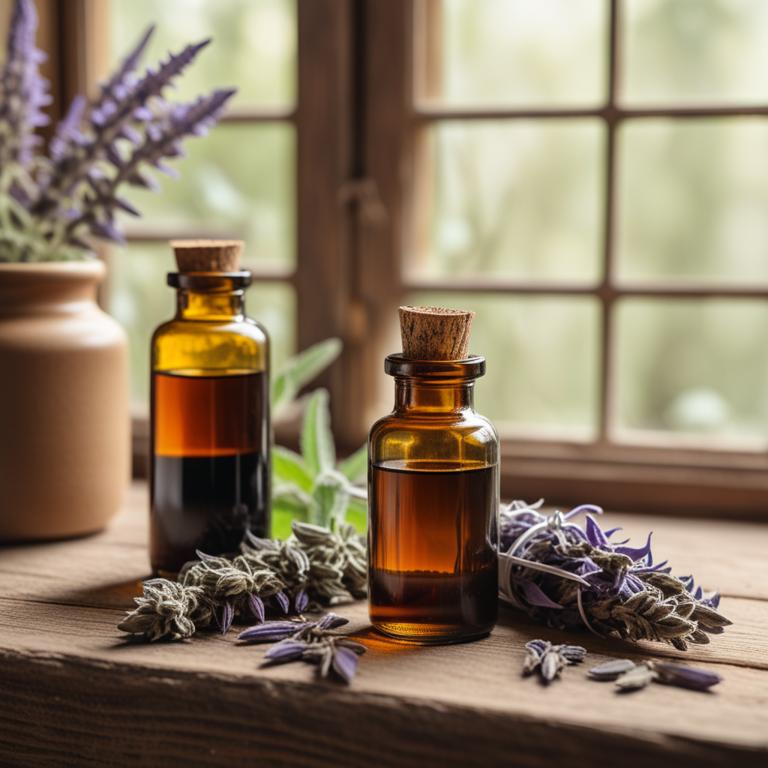
Salvia officinalis tinctures have been traditionally used to treat dental plaque ailment due to their antimicrobial and anti-inflammatory properties, which help to reduce the growth of bacteria and inflammation in the mouth.
The tannins and flavonoids present in Salvia officinalis tinctures are responsible for their antimicrobial activity, inhibiting the growth of Streptococcus mutans and other oral pathogens that contribute to dental plaque.
By reducing the bacterial load and inflammation, Salvia officinalis tinctures help to prevent the formation of dental plaque and promote oral health.
The benefits of using Salvia officinalis tinctures to treat dental plaque include reduced risk of tooth decay, gum disease, and bad breath, making it a valuable natural remedy for maintaining oral hygiene.
Related Study
According to "Avicenna journal of phytomedicine", Salvia officinalis tinctures for dental plaque have been shown to have significant effects in inhibiting oral bacteria biofilm formation, specifically able to remove biofilms created by studied bacteria and decompose teeth biofilm in 45 seconds.
8. Eucalyptus globulus tinctures

Eucalyptus globulus tinctures have been traditionally used to treat dental plaque, a bacterial buildup on teeth that can lead to oral infections.
The antiseptic and anti-inflammatory properties of Eucalyptus globulus tinctures help to treat this ailment by reducing the growth of bacteria and calming irritated tissues in the mouth.
The bioactive constituents, including eucalyptol, limonene, and α-pinene, in this herbal preparation contribute to its antimicrobial and anti-inflammatory effects, which help to combat dental plaque.
Regular use of Eucalyptus globulus tinctures can provide numerous benefits, including reduced plaque formation, fresher breath, and a healthier oral microbiome.
Related Study
According to "Journal of oral science", Eucalyptus globulus tinctures, specifically in the form of eucalyptus extract-containing chewing gum (EG), significantly reduced dental plaque formation compared to a control gum.
9. Melaleuca alternifolia tinctures
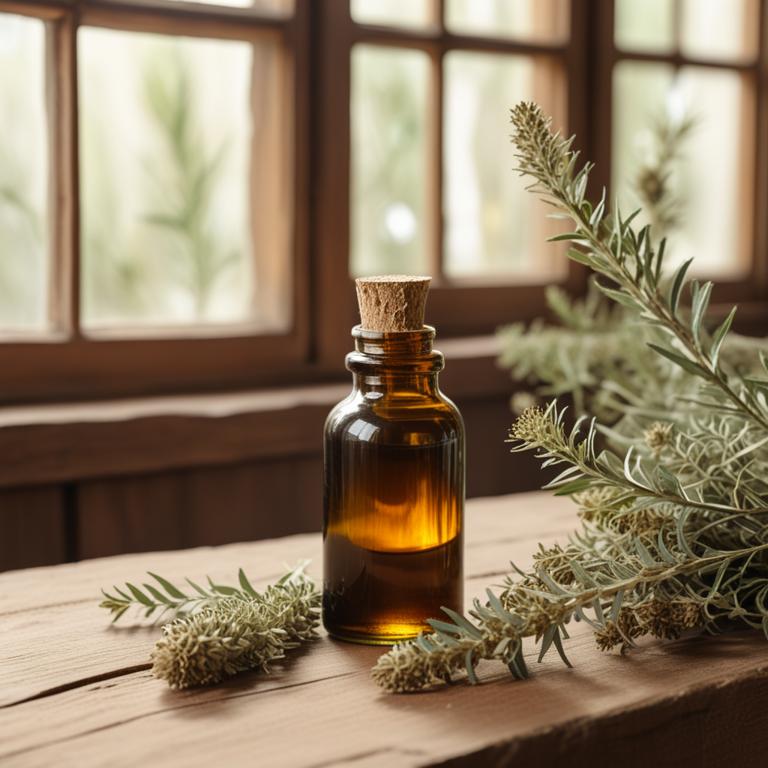
Melaleuca alternifolia tinctures, derived from the leaves of the tea tree, have been found to possess antimicrobial and anti-inflammatory properties that help to treat dental plaque, a condition characterized by the accumulation of bacteria and food particles on the teeth.
The bioactive constituents, including cineole and terpinen-4-ol, in these tinctures contribute to their ability to combat dental plaque by inhibiting the growth of pathogens and reducing inflammation in the oral cavity.
By using Melaleuca alternifolia tinctures, individuals can potentially reduce their risk of developing dental plaque-related issues, such as gum disease and bad breath, and maintain good oral health.
The benefits of this herbal preparation include its non-toxic nature, ease of use, and ability to be applied topically, making it a safe and effective natural remedy for treating dental plaque.
10. Origanum vulgare tinctures
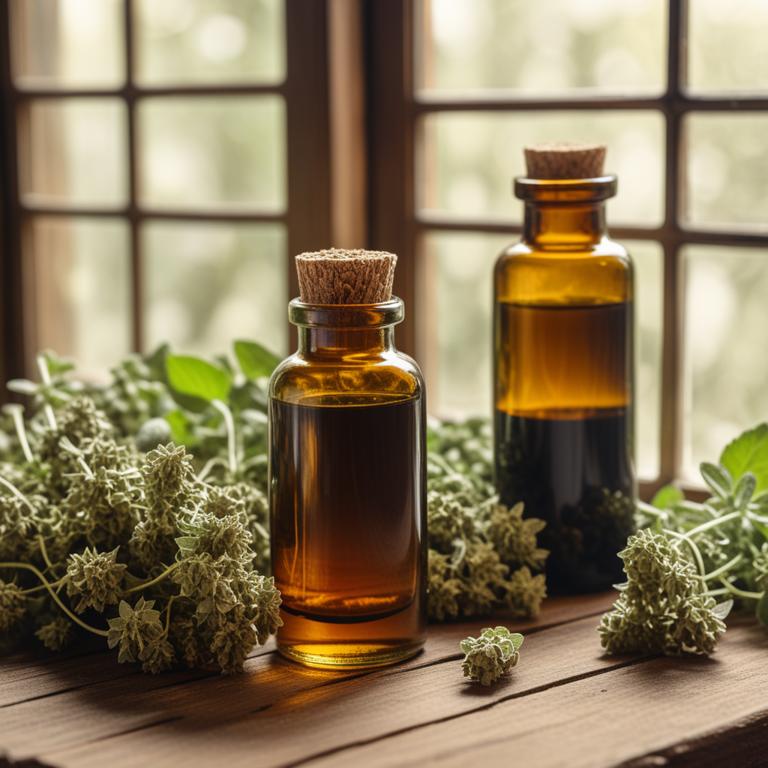
Origanum vulgare tinctures, derived from the leaves of the wild marjoram plant, possess antimicrobial and anti-inflammatory properties that make them effective in treating dental plaque.
The bioactive constituents of this herbal preparation, including carvacrol and thymol, have been shown to inhibit the growth of bacteria that contribute to the formation of dental plaque, ultimately helping to prevent gingivitis and periodontitis.
By reducing inflammation and promoting a healthy oral microbiome, Origanum vulgare tinctures help to treat dental plaque by preventing the accumulation of bacteria and toxins in the mouth.
The benefits of using this herbal preparation to treat dental plaque include reduced risk of gum disease, fresher breath, and a healthier overall oral health.
Related Study
According to "Frontiers in microbiology", Origanum vulgare tinctures for dental plaque have shown broad-spectrum antimicrobial and anti-biofilm properties, effectively reducing biofilm formation and adherence to hydroxyapatite, while also inhibiting glucosyltransferase activity and downregulating virulence-associated genes.
11. Rosmarinus officinalis tinctures
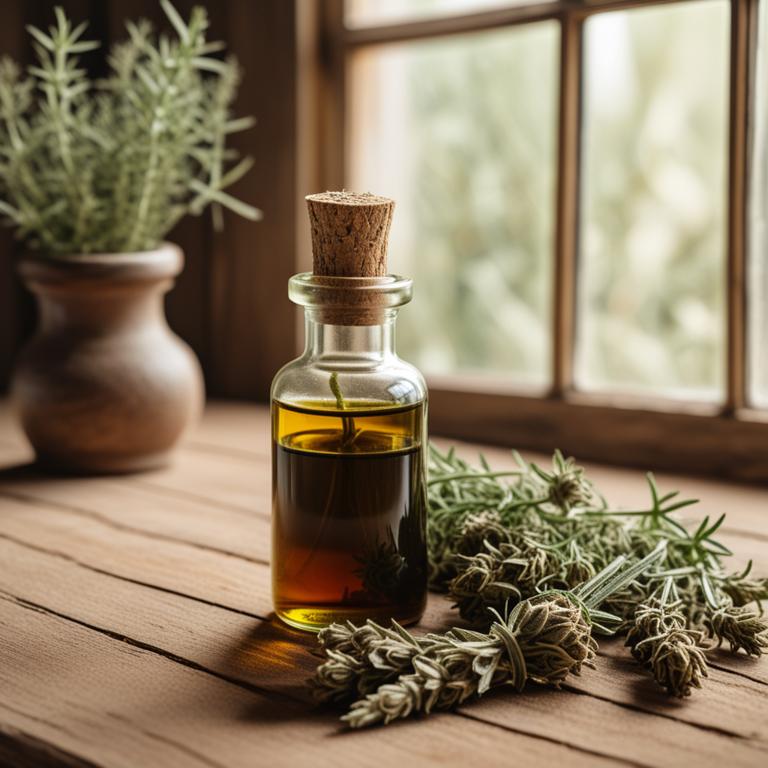
Rosmarinus officinalis tinctures have been traditionally used to treat dental plaque, a common oral health issue characterized by the accumulation of bacteria and food particles on teeth.
The properties of this herbal preparation help to treat dental plaque by exhibiting antibacterial and anti-inflammatory activities, which inhibit the growth of bacteria and reduce inflammation in the oral cavity.
The bioactive constituents of Rosmarinus officinalis tinctures, including carnosic acid and rosmarinic acid, contribute to its antimicrobial and anti-inflammatory effects, making it an effective treatment for dental plaque.
The benefits of using Rosmarinus officinalis tinctures to treat dental plaque include reduced inflammation, prevention of tooth decay, and promotion of overall oral health.
Related Study
According to "PloS one", Rosmarinus officinalis tinctures for dental plaque have been shown to exhibit moderate to high antibiofilm activity comparable to that of chlorhexidine against Streptococcus mutans, with an effective concentration of at least 0.60 mg ml-1 in inhibiting biofilm formation.
12. Zingiber officinale tinctures

Zingiber officinale tinctures have been traditionally used to treat dental plaque ailment due to their anti-inflammatory, antimicrobial, and antiseptic properties.
The bioactive constituents of this herbal preparation, including gingerols and shogaols, help to reduce inflammation and prevent the growth of bacteria that cause dental plaque.
By inhibiting the production of volatile sulfur compounds and reducing the acidity of the oral environment, Zingiber officinale tinctures help to prevent the formation of dental plaque and promote overall oral health.
The benefits of using Zingiber officinale tinctures to treat dental plaque ailment include reduced inflammation, prevention of tooth decay, and fresher breath.
Related Study
According to "Journal of clinical and diagnostic research : JCDR", Zingiber officinale tinctures for dental plaque were found to be effective, with a zone of inhibition of 25mm, making it one of the top natural products tested in the study against oral microorganisms causing caries.
13. Aloe barbadensis tinctures

Aloe barbadensis tinctures are a natural herbal preparation that has been traditionally used to treat dental plaque, a common oral health issue characterized by the accumulation of bacteria and plaque on the teeth.
The astringent and anti-inflammatory properties of Aloe barbadensis tinctures help to treat dental plaque by reducing inflammation and preventing bacterial growth, thereby promoting healthy gums and teeth.
The bioactive constituents of Aloe barbadensis tinctures, including aloin, aloe-emodin, and vitamins A and E, contribute to its therapeutic effects by inhibiting the growth of bacteria and reducing oxidative stress in the mouth.
The benefits of using Aloe barbadensis tinctures to treat dental plaque include reduced inflammation, improved oral hygiene, and a lower risk of developing gum disease and other oral health complications.
Related Study
According to "Iranian journal of basic medical sciences", Aloe barbadensis tinctures for dental plaque may act via inhibition of dental plaque formation, among other mechanisms, to be effective in managing gingivitis.